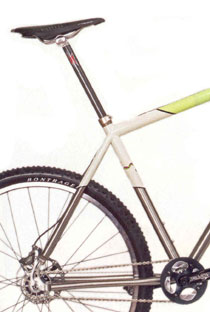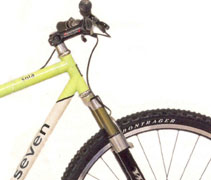Singlespeed Mountain Bikes are Taking the Sport Back to It’s Coreby Chris Millman
The new revolution in mountain biking is, in fact, de-evolution. The beauty and simplicity of tackling trails with only one gear is finding a wider acceptance among the knobby-tired set, with singlespeeders getting their own categories in races and, in some cases, winning non-singlespeed events outright.

“I’ve seen singlespeed racing doubling every year for the past four or five years,” says Laird Knight of Granny Gear Productions, organizers of 24-hour mountain bike events.
When veteran mountain bike pro Travis Brown talks about racing, he reserves the most reverential words for his most paired-down biking experience. Brown won the inaugural Single Speed World Championships in 1999, and then again in 2002, and has the obligatory race-winner’s tattoo to prove it.
“It’s difficult to explain without sounding silly,” says Brown of the singlespeed experience, “but I see the way it’s growing and catching on, so I know that people who try riding one understand what it’s all about.”
Racers like Brown are finding freedom and purity by stripping down the drivetrain to its essentials. But just because the bikes are losing derailleurs and shifters, doesn’t mean they’re resolutely low-tech. While many of the original singlespeeds were leftover bikes decked out with leftover parts, today’s singlespeeds tickle the lower reaches of weight and upper heights of performance, utilizing titanium frames, hydraulic disk brakes, carbon handlebars and long-travel suspension forks. Singlespeeders make it over the steepest climbs with a sheer force of will, and the improved energy transfer of a perfectly aligned drivetrain.
“Once I started riding one, I had a revelation about the simplicity of the ride,” says Brown. “It’s quiet, light and smooth. To me it distills the riding experience.”
